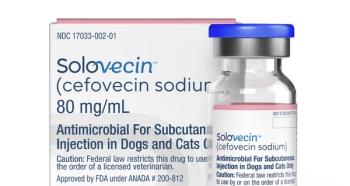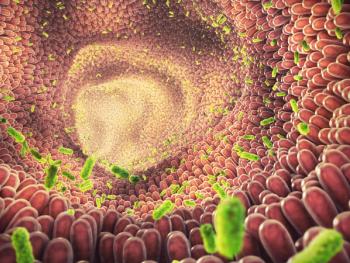
Voided Urine Can Be Used to Accurately Diagnose Canine Urinary Tract Infections
According to a recent study, voided urine specimens that are refrigerated and cultured on the same day of collection can be used to accurately diagnose urinary tract infections in dogs.
According to a recent study published in
Quantitative cut-off values are used to define significant (clinically relevant) bacteriuria in
The authors enrolled 102 dogs in the study, with 94 meeting the inclusion criteria: clinical signs of lower urinary tract disease (LUTD) or no LUTD clinical signs but predisposing conditions of a UTI, such as recurring/relapsing UTI and diabetes. They collected paired urine specimens from each dog—first by cystocentesis, then by voiding. Before collecting the voided specimen in a sterile container, the authors cleaned each dog’s external genitalia which included flushing the prepuce or vulva with sterile isotonic saline.
Within 24 hours of collection, the specimens were stored at 5o and cultured. Colony forming unit (CFU) per mL of urine was calculated following overnight incubation of specimens at 37oC on 5% calf blood agar plates. The authors used
The authors performed paired antimicrobial susceptibility testing in a select number of paired cystocentesis and voided specimens using clinically relevant antimicrobials.
Cystocentesis culture results indicated significant bacteriuria in 31 dogs. Nearly half of these dogs were classified as uncomplicated bacterial cystitis cases (clinical signs of LUTD without predisposing conditions). Regardless of collection method, the majority of dogs with significant bacteriuria had bacterial counts > 105 CFU/mL.
For all voided specimens, the authors reported a higher percentage of accuracy with the veterinary criteria (94%) than the human criteria (89%) when diagnosing significant bacteriuria. When the authors applied the human criteria, sensitivity and negative predictive value increased; however, the number of false positives also increased, lowering the overall accuracy. Applying the veterinary criteria, the authors reported higher specificity, positive predictive value, and diagnostic accuracy for dogs with clinical signs of LUTD than those without clinical signs.
The authors observed bacterial growth in 32 cytocentesis specimens and 55 voided specimens. The majority of these specimens contained one bacterial species, with E. coli being the predominant bacteria identified in both specimen types.
In 28 voided specimens, the authors observed presumed bacterial contamination, defined for this study as bacterial species present in voided specimens but not corresponding cystocentesis specimens. Three of these specimens were from the 27 dogs whose external genitalia had not been cleaned according to study protocol prior to specimen collection. The authors wrote that, because cleaning of the external genitalia appeared to have only a minor influence on bacterial contamination, “meticulous washing procedures seem unnecessary, although visible dirt and purulent material should be removed before collection of voided specimens.”
In 10 paired specimens that were culture-positive, results of antimicrobial susceptibility testing indicated a susceptibility difference in only one of the paired specimens. In this pair, E. coli demonstrated intermediate susceptibility to amoxicillin/clavulanic acid in the cystocentesis specimen and was susceptible to amoxicillin/clavulanic acid in the voided specimen.
The authors acknowledged the potential challenge of prompt refrigeration and quantitative bacterial culture testing in clinical practice. Although the risk of false positives and false negatives with voided specimens is minimal, authors recommended considering this risk when deciding which specimen type to collect for bacterial culture.
Dr. JoAnna Pendergrass received her doctorate in veterinary medicine from the Virginia-Maryland College of Veterinary Medicine. Following veterinary school, she completed a postdoctoral fellowship at Emory University’s Yerkes National Primate Research Center. Dr. Pendergrass is the founder and owner of JPen Communications, LLC.
Newsletter
From exam room tips to practice management insights, get trusted veterinary news delivered straight to your inbox—subscribe to dvm360.






